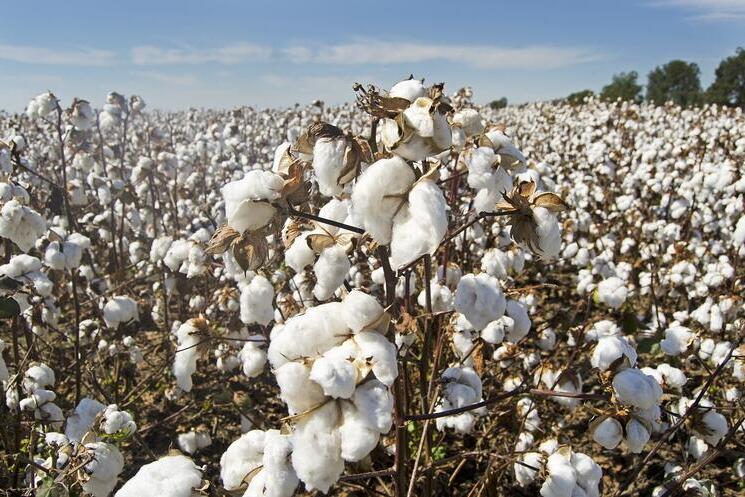How US cotton exports are shifting in response to competition and trade policy

URBANA, Ill. – While the t-shirt you are wearing is likely to be made in China, Vietnam or Pakistan, it may be produced from cotton grown much closer to home. The U.S. is a major world supplier of cotton, exporting much of the production to markets in Asia, where it goes into textile manufacturing. However, growing competition from Brazil and the effects of recent trade policies are shifting global market trends. A new study from the University of Illinois investigates how U.S. cotton exports are impacted by these patterns.
The U.S. accounts for 15% of annual world production and 35% of the value of international cotton trade. That makes the country the world’s largest cotton exporter, but Brazil is quickly catching up, says William Ridley, assistant professor of agricultural and consumer economics at U of I and lead author on the paper, published in the American Journal of Agricultural Economics.
“As recently as the early 2000s, Brazil was only a minor player in the cotton market, and now they are the second largest exporter in the world. Brazil's cotton production is more than three times higher than it used to be, with a large expansion in land area devoted to cotton. It is also a trend more broadly with Brazil's agricultural sectors, they've become much more trade oriented. Almost overnight, they became a major player in the cotton sector,” Ridley states.
Brazil’s exports to Asian markets, primarily China, Vietnam, Pakistan, Turkey, Bangladesh and Indonesia, have continuously increased over the past two decades. Ridley and co-author Stephen Devadoss, Texas Tech University, address how Brazil’s growing presence in the world market has affected competitive dynamics.
The authors conducted a statistical analysis of cotton trade between any two countries in the world, looking at the impact of trade agreements, trade policies, tariffs, and other factors. They also modeled these trade flows in relation to Brazil's land area devoted to cotton, estimating how Brazil's expanding cotton production affects other countries through the global trade system.
Ridley and Devadoss also looked at the effects of the recent U.S.-China trade war. At the onset of the dispute in 2018, China imposed a 25% retaliatory tariff on U.S. cotton, causing U.S. exports to decline and opening the door for Brazil.
The researchers performed a counterfactual simulation analysis, where they built a statistical model of the global cotton market as it would have looked without the trade war and the Chinese tariffs. Simulating this scenario allowed them to isolate these elements from other factors affecting trade.
Based on this simulation model, Ridley and Devadoss estimate that U.S. cotton exports to China went down by about $500 million annually. These exports were instead diverted to other markets, primarily Vietnam, Pakistan, and Bangladesh.
The authors estimate that Brazil's exports to China went up by about $75 million. While U.S. exports to China have somewhat recovered since 2020, when the U.S.-China Phase One trade deal was implemented, Brazil’s share of the market remains high.
“Brazil didn't really have much of a foothold in the Chinese market prior to the trade war. Now they seem to be there to stay, so that’s one of the consequences of the dispute,’” Ridley notes.
“It's long been recognized there's growing competition between the U.S. and Brazil in agricultural markets, particularly soybeans and corn. Brazil is really well suited to the production of a lot of these commodities. They are rapidly developing their infrastructure and capacity to export and sell products to the rest of the world. Our results address this growing competition in agricultural commodities and illustrate how factors like the trade war have accelerated this development,” Ridley concludes.
The paper, "Competition and trade policy in the world cotton market: Implications for US cotton exports," is published in the American Journal of Agricultural Economics. [https://doi.org/10.1111/ajae.12370]
This work was supported by the USDA National Institute for Food and Agriculture, Agricultural and Food Research Initiative Competitive Program, Agriculture Economics and Rural Communities.
The Department of Agricultural and Consumer Economics is in the College of Agricultural, Consumer and Environmental Sciences at the University of Illinois.